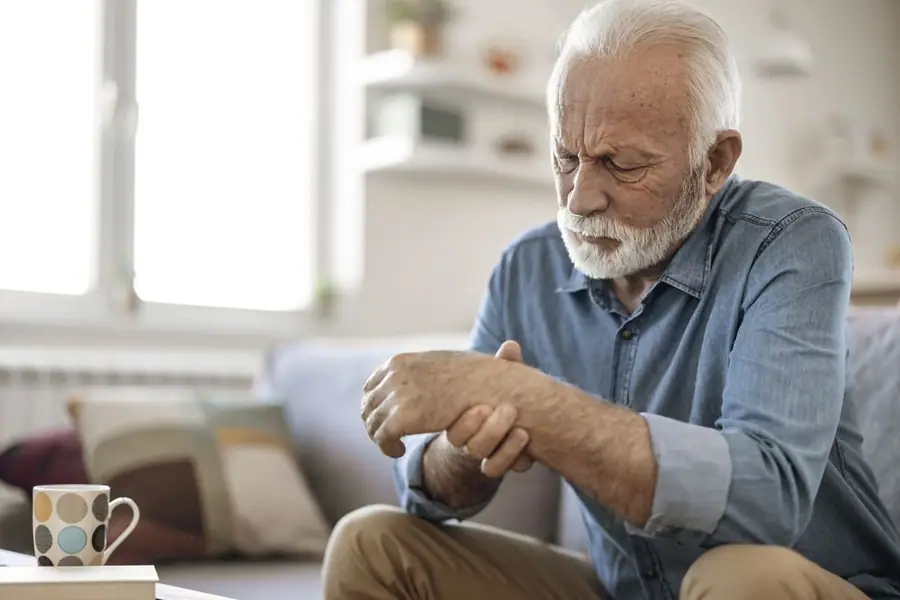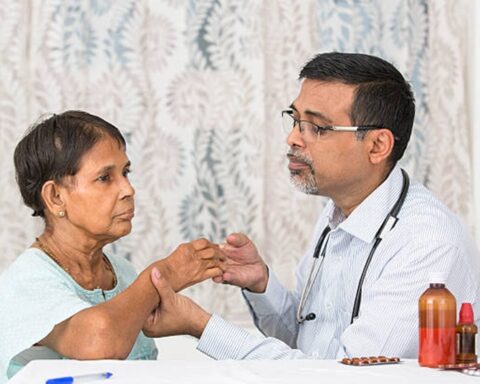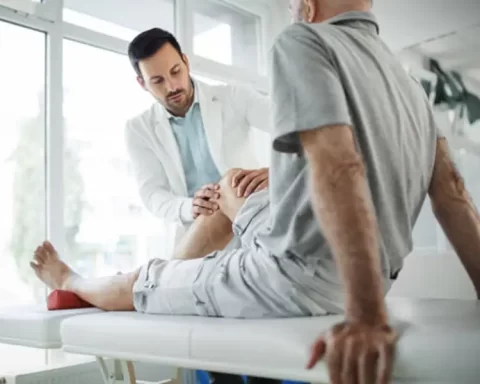New Delhi, Oct 12 (Pharmacy Times) World Arthritis Day is observed on October 12 every year. It aims to create awareness about rheumatic and musculoskeletal diseases.
Arthritis is an inflammatory disease that affects the joints.
Osteoarthritis and rheumatoid arthritis are the most common types of arthritis.
The theme for the World Arthritis Day 2023 is “Living with an RMD (Rhythmic Movement Disorder) at all stages of life.”
The term arthritis means the inflammation or swelling of one or more joints, and it encompasses more than 100 conditions that affect the joints, tissues around the joints, and other connective tissues.
Specific symptoms vary depending on the type of arthritis but usually include joint pain and stiffness.
Osteoarthritis is the most common form of arthritis. Gout, fibromyalgia, lupus, and rheumatoid arthritis are other common rheumatic conditions.
Prevalence
Based on data from the National Health Interview Survey, between 2016 and 2018 an estimated 58.5 million US adults were diagnosed with some form of arthritis, rheumatoid arthritis, gout, lupus, or fibromyalgia.1 By 2040, an estimated 78.4 million US adults aged 18 years or older are projected to have doctor-diagnosed arthritis.
Arthritis and other rheumatic conditions are a leading cause of work disability among US adults. Among working-age US adults (aged 18 to 64 years) with arthritis, nearly 1 in 3 (30.2%) had work disability between 2011 and 2013.
Medications
Medications can ease symptoms and slow disease progression, helping patients improve their quality of life. Options include analgesics, nonsteroidal anti-inflammatory drugs (NSAIDs), corticosteroids, disease-modifying antirheumatic drugs (DMARDs), targeted DMARDs, and biologics.
Analgesics
General pain relievers, such as acetaminophen, may ease mild to moderate pain but do not do anything for inflammation (hot, swollen joints). They are often used for arthritis pain because of their minimal adverse effects on the gastrointestinal system. Pharmacists should caution patients not to take too much, however, as it can damage the liver in high doses. Also exercise caution when choosing a product, as they come in combination with many other drugs.
NSAIDs
NSAIDs, such as ibuprofen, naproxen, and aspirin, are available as OTC products and work to decrease pain and inflammation by blocking hormone-like substances call prostaglandins. Although they work in the same way, some NSAIDs require a prescription, such as indomethacin and celecoxib. All NSAIDs can increase the risk of heart attack, stroke, or gastrointestinal bleeding.
Corticosteroids
Corticosteroids, also called steroids or glucocorticoids, reduce inflammation by mimicking the natural hormone cortisol. These work quickly and are therefore good for short-term relief. Unfortunately, the adverse effect profile is significant for weight gain, cataracts, and hypertension. If patients do take corticosteroids in the long term, the dose should be low.
DMARDs
DMARDs are also known as immunosuppressants because of their actions on the immune system. They work in several ways to hold back the immune system in order to decrease pain and inflammation, reduce joint damage and bone erosion, slow disease progression, and preserve joint function.
Traditional DMARDs include methotrexate, sulfasalazine, hydroxychloroquine, and azathioprine. DMARDs may take weeks to months to take effect and leave patients immunocompromised.
Targeted DMARDs
Targeted synthetic DMARDs, also known as small molecule DMARDs, have specific targets in the immune system, decreasing immunocompromising properties common in other DMARDs. These drugs can be taken by mouth, which can greatly improve adherence to therapy.
- Janus kinase (JAK) inhibitors: These medications interfere with phosphorylation of key proteins involved in the signal transduction that leads to immune activation and inflammation.
- Phosphodiesterase-4 (PDE-4) inhibitors: These medications act at a cellular level to stop the degradation of cyclic adenosine monophosphate (cAMP), which increases the rate of cAMP. This higher rate of cAMP may decrease inflammation.
Biologics
Biologics are special types of DMARDs. These are harder to make than traditional DMARDs and are priced accordingly. These are injected or infused medications that are powerful. Not all biologics work for all people, and if a patient fails to improve on one type, they can try others.
Several biologics exist, each working in a different way:
- Tumor necrosis factor inhibitors: These work by blocking tumor necrosis factor, a cytokine present in the inflammatory process.
- Interleukin inhibitors: Different biologics target different interleukins (IL-1, IL-6, IL-12, IL-17, and IL-23). Interleukin inhibitors disrupt communication between cells involved in the inflammatory process.
- B-cell inhibitors: These biologics rapidly deplete B-cells, a major contributor to the inflammatory response. These medications are typically reserved for patients for whom other biologics have not worked.
- Selective costimulation modulators: These bio logics specifically modulate T-cell function to reduce the inflammatory response. Like B-cell inhibitors, these are reserved for patients for whom other biologics have not worked.
Physical Therapy
Physical therapy for arthritis improves symptoms and enhances movement quality. Physical therapy is typically part of an arthritis treatment plan that also includes medication, supplements, and/or topical treatments. A physical therapist will evaluate posture, muscle imbalances, and body mechanics and create exercises to improve movement in such a way that helps prevent injury, reduces pain, and aligns the body.
Although exercising has many benefits for patients with arthritis, patients should check with their physicians before starting an exercise program. When starting an exercise routine, patients should make sure to stretch before and after exercise, start slowly, and always do low-impact exercises.
Complementary Therapies
Some other therapies can complement medications and physical therapy. Although some findings have been mixed, most of the literature has shown that acupuncture can help improve chronic pain. Massages can also be helpful, and in addition to stress reduction and relaxation, massages can relieve tension around connective tissue.
Finally, thoughts and actions can affect the autonomic nervous system. A biofeedback machine will help patients learn how to control their breathing and heart rate as well as other physical reactions, such as pain.
Surgery
As a last resort, surgery may be necessary. There are several types of surgery that can be performed. Arthroscopy can be performed to repair damaged cartilage and ligaments, and remove broken, free-floating cartilage pieces. Joint resurfacing is a more invasive procedure to replace a portion of a joint, and osteotomy involves cutting and removing bone or adding a wedge of bone near the damaged joint.
Synovectomy involves removing all or most of the synovium, which is the connective tissue lining the inside of the joint capsule. Arthrodesis or fusion utilizes pins, plates, rods, or other hardware to join 2 or more bones. Finally, total joint replacement is performed to replace a damaged joint with an implant that mimics the motion of a natural joint. Implants are made from metal, plastic, and/or ceramic components.





